
| Home » Region » Denmark | ||||
Denmark
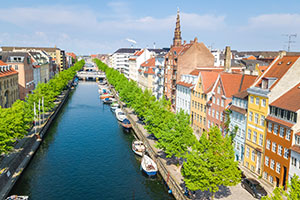 COPENHAGEN 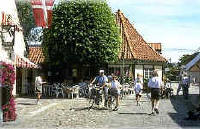 FUNEN 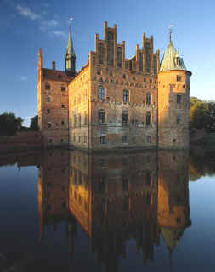 EGESKOV CASTLE 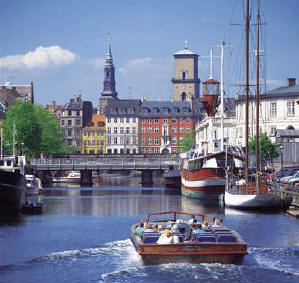 COPENHAGEN 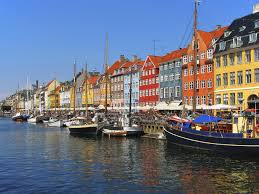 Denmark lies between the North Sea and the Baltic, between northern Europe and the other Scandinavian nations, and (with more than 500 islands) between dry land and open sea. From this enviable seafaring position Denmark has forged a magnificent history and developed a remarkable culture. A Brief HistoryIn the eleventh century, Viking ships carried the power of the Danish monarchy to all of the coasts of medieval Europe. Today, visitors from all over the world come to Europe's oldest kingdom to explore the royal city of Copenhagen, to sample the glories of Denmark's rich culture, and to meet its vibrant and friendly people. During the Viking period (9th-11th centuries) Denmark was a great power based on the Jutland Peninsula the Island of Zealand and the southern part of what is now Sweden. In the early 11th century King Canute united Denmark and England for almost 30 years. Viking raids brought Denmark into contact with Christianity and in the 12th century crown and church influence increased. By the late 13th century royal power had waned and the nobility forced the king to grant a charter considered Denmark's first constitution. Although the struggle between crown and nobility continued into the 14th century Queen Margrethe I succeeded in uniting Denmark Norway Sweden Finland the Faroe Islands Iceland and Greenland under the Danish crown. Sweden and Finland left the union in 1520; however Norway remained until 1814. Iceland in a "personal union" under the king of Denmark after 1918 became independent in 1944. The Reformation was introduced in Denmark in 1536. Denmark's provinces in today's southwestern Sweden were lost in 1658 and Norway was transferred from the Danish to the Swedish crown in 1814 following the defeat of Napoleon with whom Denmark was allied. The Danish liberal movement gained momentum in the 1830s and in 1849 Denmark became a constitutional monarchy. After the war with Prussia and Austria in 1864 Denmark was forced to cede Schleswig-Holstein to Prussia and adopt a policy of neutrality. Toward the end of the 19th century Denmark inaugurated important social and labor market reforms laying the basis for the present welfare state. Denmark remained neutral during World War I. Despite its declaration of neutrality at the beginning of World War II it was invaded by the Germans in 1940 and occupied until it was liberated by the Allied forces in May 1945. Denmark became a charter member of the United Nations and was one of the original signers of the North Atlantic Treaty. Cultural AchievementsDenmark's rich intellectual heritage contributes to the cultural achievements of the modern world. The astronomical discoveries of Tycho Brahe (1546-1601) and the brilliant contributions to atomic physics of Niels Bohr (1885-1962) indicate the range of Danish scientific achievement. The fairy tales of Hans Christian Andersen (1805-75) the philosophical essays of Soren Kierkegaard (1813-55) and the short stories of Karen Blixen (penname Isak Dinesen 1885-1962) have earned international recognition as have the symphonies of Carl Nielsen (1865-1931). Danish applied art and industrial design have won awards for excellence. The name of Georg Jensen (1866-1935) is known worldwide for outstanding modern design in silver and "Royal Copenhagen" is among the finest porcelains. Visitors to Denmark will discover a wealth of cultural activity. The Royal Danish Ballet an exceptional company specializes in the work of the great Danish choreographer August Bournonville (1805-79). Danes have distinguished themselves as jazz musicians and the Copenhagen Jazz Festival has acquired an international reputation. International collections of modern art enjoy unusually attractive settings at the Louisiana Museum north of Copenhagen and at the North Jutland Art Museum in Aalborg. The State Museum of Art and the Glyptotek both in Copenhagen contain treasures of Danish and international art. The Museum of Applied Art and Industrial Design in Copenhagen exhibits the best in Danish design. The Royal Danish Porcelain Factory and Bing & Grondahl renowned for the quality of their porcelain and ceramics export their products worldwide. Ceramic designs by Bjorn Wiinblad also are well known and popular. Among today's Danish writers probably the most well-known to American readers is Peter Hoeg (Smilla's Sense of Snow; Borderliners) and the most prolific is Klaus Rifbjerg -- poet novelist playwright and screenwriter. Benny Andersen writes poems short stories and music. Poems by both writers have been translated into English by the Curbstone Press. Kirsten Thorup's Baby winner of the 1980 Pegasus Prize is printed in English by the University of Louisiana Press. The psychological thrillers of Anders Bodelsen also appear in English. Suzanne Brogger and Vita Andersen focus largely on the changing roles of women in society. In music Hans Abrahamsen and Per Norgaard are the two most famous living composers. Hans Abrahamsen's works have been performed by the National Symphony Orchestra in Washington DC. Cultural PolicyThe Ministry of Cultural Affairs was created in 1961. Cultural life and meaningful leisure time were then and remain subjects of debate by politicians and parliament as well as the general public. The democratization of cultural life promoted by the government's 1960s cultural policy recently has come to terms with the older "genteel culture;" broader concepts of culture now generally accepted include amateur and professional cultural media sports and leisure-time activities. Denmark's cultural policy is characterized by decentralized funding program responsibility and institutions. Danish cultural direction differs from other countries with a Ministry of Culture and a stated policy in that special laws govern each cultural field -- e.g. the New Theater Act of 1990 and the Music Law of 1976. The Ministry of Cultural Affairs includes among its responsibilities international cultural relations; training of librarians and architects; copyright legislation; and subsidies to archives libraries museums literature music arts and crafts theater and film production. During 1970-82 the Ministry also recognized protest movements and street manifestations as cultural events because social change was viewed as an important goal of Danish cultural policy. The current government exercises caution in moderating this policy and practice. Radio and broadcasting also fall under the Ministry of Culture. Government contributions to culture have increased steadily in recent years but viewed against the present government's firm objective to limit public expenditures contributions will stabilize in the future. Municipal and county governments assume a relatively large share of the costs for cultural activities in their respective districts. In 1996 government expenditures for culture totaled about 1.0% of the budget. Most support went to libraries and archives theater museums arts and crafts training and films. |












